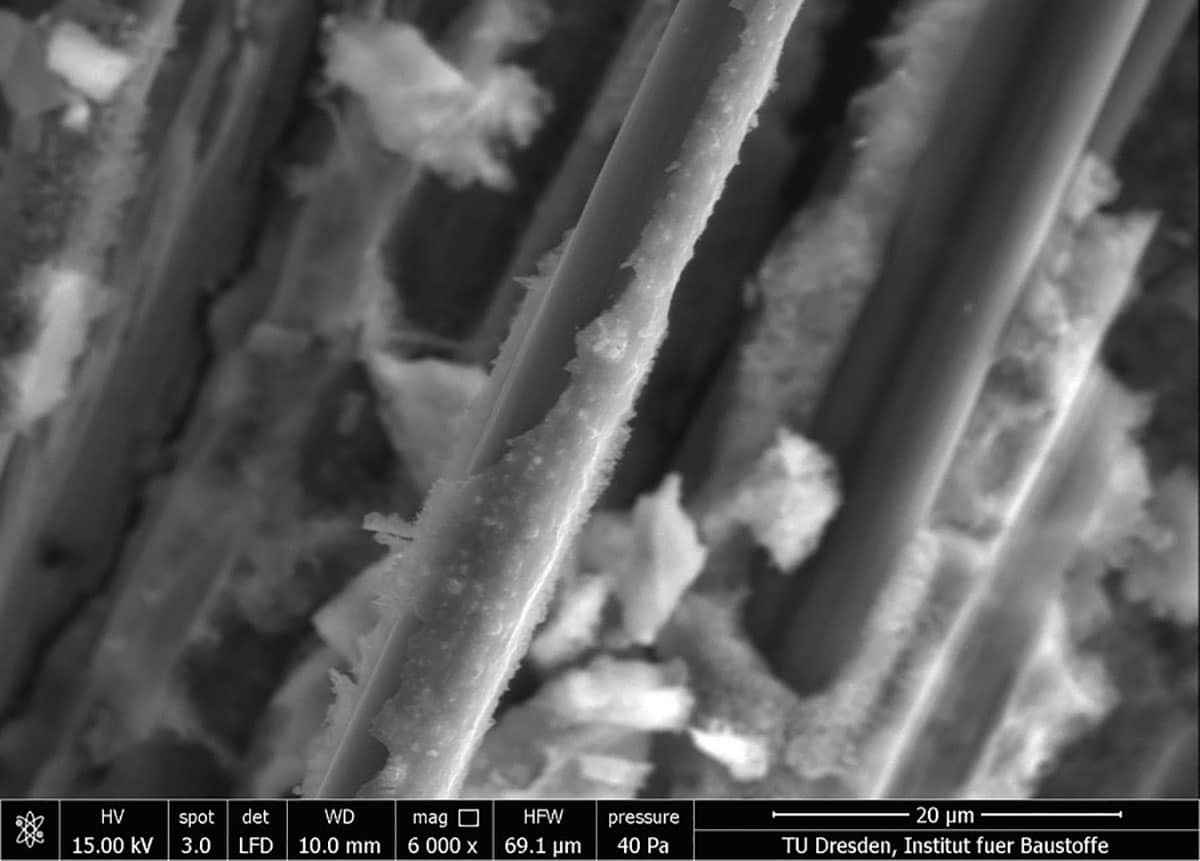
Carbon fibers (CF) are now more frequently used in composite materials due to their extremely high rigidity, high tensile strength, and low thermal expansion. In recent years, they are also increasingly used in the construction industry. However, insufficient bonding behavior between intrinsically hydrophobic carbon fibers and water-based suspensions restricts the application of carbon fiber-reinforced cement and other mineral building materials.
For concrete, this compound is not always sufficiently solid, especially at higher temperatures. Carbon concrete is considered to be the building material of the future: Lightweight, flexible, and needs significantly less resources than reinforced concrete.
To resolve this issue, several researchers have investigated physical and chemical modification methods that can be used to achieve even more stable composites. For their study, the researchers from the Institute of Construction Materials and the Institute of Structural Analysis at TU Dresden collaborated with Shanghai Jiao Tong University in China.
Researchers investigated both technological and Physico-chemical approaches that can provide improved fiber-matrix interaction at different temperatures. They identified both textile-technological approaches, such as suitable coating or impregnation materials, and Physico-chemical methods using plasma treatments or electrochemical deposition as particularly promising.
In their study, researchers from TU Dresden and Shanghai Jiao Tong University have now been able to present a comparative analysis of the various modification methods that are intended to enable improved load transfer between carbon fibers and cement-based matrices. They systematically reviewed and compared all these approaches to describe and recommend appropriate methods for achieving tailor-made interfacial bonding behavior.
Finally, suitable approaches to characterization are discussed to provide a comprehensive overview of the related methodology and to assist in studying the characteristics of the carbon fiber itself and its bonding behavior toward mineral matrices.
Journal reference:
- Huanyu Li, Marco Liebscher, Dong Zhao, Bo Yin, Yuhang Du, Jian Yang, Michael Kaliske, Viktor Mechtcherine. A review of carbon fiber surface modification methods for tailor-made bond behavior with cementitious matrices. Progress in Materials Science, 2022; DOI: 10.1016/j.pmatsci.2022.101040
Exploring improved applications for carbon fibers in concrete
Source: Tambay News

0 Comments